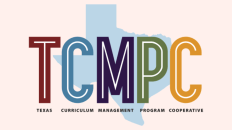In the fall of 2024, a group of K-12 science teachers in Marble Falls ISD signed up to be a part of the Science Vertical Instructional Team (VIT). One of the first things the team tackled, along with two ESC Region 13 science specialists, was taking a deep dive into science STAAR/EOC district data for Grades 5 and 8, as well as biology. What started as three key noticings became intentional instructional opportunities shared with other campuses and districts. Let’s examine the observations made in this article and the three ways they impact science instruction.
Three Key Noticings
After drilling down from the data to the standards and then to the questions, the science VIT identified three recurring areas where students showed possible struggles.
- Data Tables
- Compare and Contrast
- Crossing Concepts
Questions that involved data tables, compare and contrast, and a cross of more than one concept led the team to wonder if they were giving students enough opportunities to work within these areas.
Data Tables
Pause for a moment and consider the following:
- Are students creating, recording, analyzing, and/or interpreting data?
- Are students designing and/or interacting with data tables?
- Are the data tables set up in various ways? See examples below.

Compare and Contrast
If you think about it, data tables and compare and contrast have something in common. They both involve working with multiple pieces of information. We may ask students questions around compare and contrast and even have them complete Venn diagrams or other graphic organizers, but could we go further?
Pause for a moment and consider the following:
- Are students comparing and contrasting two pieces of information in various contexts?
- Are they comparing and contrasting with written texts, diagrams, illustrations, tables, and other visual aids?
- Are students participating in academic discussions with peers?
- Are they presenting their comparisons in written form (short responses, Claims-Evidence-Reasoning, or graphic organizers)?
- Are students comparing and contrasting more than two pieces of information?
- For example, an investigation with three to four independent variables would lend itself to collecting data, creating a data table, and comparing and contrasting.
Crossing Concepts
As the Science Vertical Instructional Team (VIT) delved into specific questions in their data analysis, they noticed that some questions required an understanding of multiple concepts simultaneously. For instance, if students are presented with a scenario that showcases force and motion, other concepts may arise, such as gravity, push, pull, as well as changes in speed, position, and direction of an object.
Sometimes we teach students concepts in isolation. Sometimes we connect or cross over a few concepts. But let’s go even further. Recurring Themes and Concepts (RTCs) are part of the K-8 science TEKS and continue to be addressed within high school courses.
Think:
- Patterns
- Cause and Effect
- Systems
- Structure and Function
- Scale
If we work with students on their understanding of a concept and then have them apply what they know when multiple concepts intersect, we can help them recognize recurring themes across science disciplines.
Pause for a moment and consider the following:
- Are students applying a current concept to previous learning?
- Are students crossing concepts to make a connection to a recurring theme?
- Are students discovering and justifying connections with concepts across areas of science?
Conclusion
So, you might be wondering what to do now. How does this impact science instruction?
- Take these questions to your next PLC or team meeting. Reflect together on instructional approaches that strengthen student learning.
- Take the questions above and turn them inward. How am I providing students with _____? How can I incorporate _____ for students? How can I take _____ further?
- Check out ESC Region 13’s Lesson Check The Science Way! for a checklist of opportunities to incorporate in your lessons.
- Check out TEA’s Recurring Themes and Concepts Question Prompts as a way to support students in making connections.
For the most up-to-date science news and information, visit our website and subscribe to our newsletter. We offer engaging workshops throughout the year, as well as special events, including conferences and other notable gatherings. See all our professional development here.
Reach out directly to the Science Team anytime at Vejheh.Tavakoli@esc13txed.net (Secondary Science) or Carolyn.Beardsley@esc13txed.net (Elementary Science).

Carolyn Beardsley
Carolyn Beardsley is the Elementary Science Instructional Coach at ESC Region 13.





Add comment